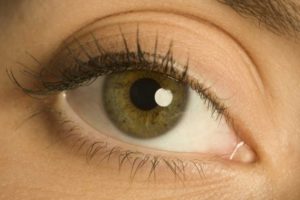Interesting facts about eyes and vision
 We receive information about the world around us with the help of all our senses at once, but the main information channel remains the vision. Blind people are exacerbated by other feelings, but for all those who see it, their eyes are the organs that help them to orient themselves and realize everything that is happening.
We receive information about the world around us with the help of all our senses at once, but the main information channel remains the vision. Blind people are exacerbated by other feelings, but for all those who see it, their eyes are the organs that help them to orient themselves and realize everything that is happening.
Vision provides a person with 90% of the information that he receives about the world around him.
In 2010, a group of scientists from Switzerland transplanted the jellyfish gene gene, code-named Pax-A. Thanks to this, the insect managed to grow several normal eyes on unusual parts of the body.
By exposure to light, the pupil of the eye narrows, protecting the retina from damage. In the semi-darkness, on the contrary, the pupil lets in the eye more light.
The thickness of the human eye retina is only 0.05 to 0.5 mm, but it is divided into 10 microscopic layers.
Too bright illumination is not less harmful to vision than lack of light.
Daltonics are people who have a special perception of colors. They do not distinguish some contrasting shades, obvious to other people, but they consider different colors, the same for people without such a feature. According to statistics, Daltonians are approximately 8% of the male population of the Earth and only 0.4% of women.
Man is the only animal that cries under the influence of strong emotions. In other living organisms tears are needed only for cleaning the eyes of foreign objects and their wetting.
The retina of the human eye perceives the world upside down, and then the resulting picture turns the brain. In addition, the eye gets the image divided into half and significantly distorted, and the brain collects it together.
The human peripheral vision has a very low resolution and almost does not transmit colors. Scientists have proved that the side vision of women is much better than that of men.
All blue-eyed inhabitants of the Earth are descendants of one ancestor who lived about 6000 years ago. Initially, all the people who inhabited the Earth, eyes were brown.
People who have lost sight at a conscious age, continue to see pictures of the world in a dream, while a blind person does not dream of a picture.
People blink about 7,900,000 times a year, or about 15 times per minute.
The eyeball of myopic people is longer than usual, far-sighted people are shorter.
The size of human eyes remains almost unchanged from birth to old age.
Newborn babies distinguish objects at a distance of about 40 centimeters. Approximately so far from the kids the mother’s face is removed during feeding.
Human tears have different chemical composition depending on whether the person suffers, rejoices, yawns or removes the speck from the eye.
The muscles of the eyes are the most active of the entire musculature of the human body.
The owner of the largest eyes in the world is a giant squid.
Ommatophobia is the strongest fear of the eye.
The human eye can theoretically discern about 500 shades of gray.
The human eye weighs about 7 grams, and the diameter of the eyeball of most people is 24 mm.
In ancient times, the Arabs checked the view, looking at the night sky constellation of the Great Bear. People with normal vision can discern a small asterisk near the middle star in the handle of the “ladle”.
Most dark-eyed people live in Portugal and Turkey, and the most light-eyed inhabitants of the planet inhabit Scandinavia.
Women, according to statistics, cry about 50 times a year, men – 7.
A person can not sneeze without closing his eyes.



























